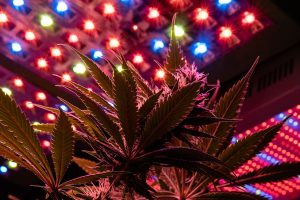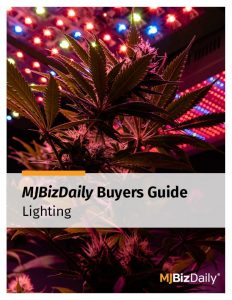
Myths about lighting pervade the cannabis industry.
Because the industry was underground for so many years, it led to growers doing things in ways that “make no sense,” said Marc van Iersel, horticulture professor at the University of Georgia.
“Old-school cannabis growers believe it’s a special crop, different than any other plant,” van Iersel said.
“In reality, it’s just one more photoperiodic greenhouse crop. In many ways, it’s not that different from growing a poinsettia or chrysanthemum.”
Van Iersel and other horticultural lighting experts and cannabis lighting professionals weighed in about the lighting myths they hear frequently:
Cannabis responds only to the red and blue spectrum.
“While cannabis does respond to the red and blue spectrum, full-spectrum light (from natural sunlight or full-spectrum LEDs) is the most effective for growing cannabis,” said Alex Gerard, chief technical officer, Foshe.
“Full-spectrum LEDs are similar to natural sunlight, providing the full range of light within PAR (photosynthetically active radiation), increasing yield and harvest quality.”
Cannabis needs to be grown under metal halides for vegetative growth and HPS for flowering.
“Some growers believe the more reddish light emitted by high-pressure sodium (HPS) lights supports flowering; however, flowering in short-day plants (like cannabis) isn’t induced by different light spectrums,” Irsel said.
“It is induced by reducing the photoperiod. Switching between metal halides and HPS is labor-intensive and unneeded.”
Cannabis grown under LEDs needs more CO2.
“The only factor that influences the need for CO2 is the amount of daily light integral (DLI) the crop receives, whether that’s from natural sunlight or electrical lighting,” said Travis Higginbotham, vice president of production, Harborside Inc.
“It isn’t the fixture that makes the difference, it’s the total amount of light the plant receives, regardless of what fixture is used.”
Download the 2021 MJBiz Lighting Buyer’s Guide to read about five other common cannabis lighting myths and what cultivation experts say about them to help cannabis producers grow more efficiently with supplemental lighting.


